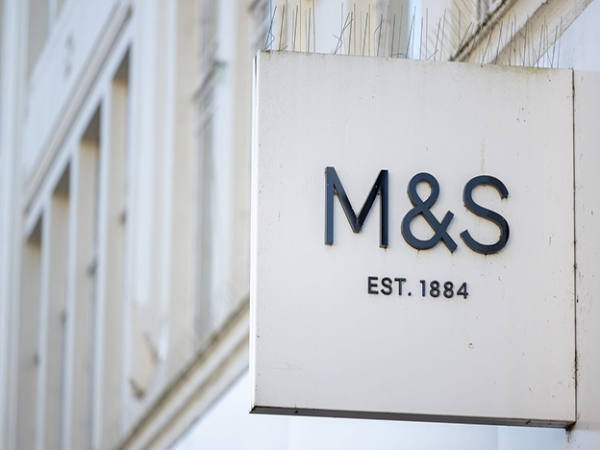Bill Ackman is pretty smart – he made a return of more than 100 per cent on his $2bn (£1.6bn) investment in industrial gas supplier Air Products (US:APD), and largely credited his appointee, Air Products chief executive Seifi Ghasemi. At the time of that investment, I was helping a couple of investors assess their holding in his Pershing Square funds, which included meeting Bill a couple of times and interviewing some of his analysts.
The analyst responsible for Air Products told me about his incredibly detailed process for assessing new chief executive candidates, and praised Ghasemi for improving the company’s return on invested capital (ROIC) in his previous role. I was puzzled and asked the analyst why he had not evaluated the executive’s return on capital employed (ROCE) performance instead –or as well – and I was told: “It’s earnings that count.” He made it clear he meant to add “dummy” to the end of that sentence but was being polite.
I am continually mystified by the fashions that operate in equity markets, where large numbers of professional players are happy to rave about the latest ratio without having the faintest idea what’s actually going on under the hood of the company they are discussing. I think the professionals are worse than the amateurs.
I want to explore more fully the ROIC metric, which is at the centre of any quality investor’s process. How many actually understand the metric in detail?
ROIC is a measure of returns after tax on total capital employed, including any goodwill generated on acquisitions. The goodwill element is really important because companies often overpay for deals, which depresses the subsequent returns. Analysts want to look at ROIC because it allows them to understand how effective capital allocation has been for a business, including both acquisitions and organic investments. And it’s this overall picture that affects shareholders.
There is nothing wrong with the use of the metric – it’s an effective guide to the historical picture. But when you are considering an investment, you should be interested in future returns. And those returns are driven by:
1. Historical record of returns
We need to consider changes in the fundamentals that may affect the operating performance; this is the most critical factor when considering the outlook. This capital has been deployed and cannot easily be moved elsewhere. This is where the greatest attention is required.
2. The ability to deploy capital
Companies’ abilities to invest capital differ. In some industries, it may be better to return capital to shareholders, while in others there is ample opportunity for further investment. Understanding this is core to the valuation of a business – the market will pay a lot more for a business that can continue to invest at high returns than one that has historically had high returns but is running out of road. Investors do pay a lot of attention to metrics such as total addressable market, and often talk about the runway for growth. It’s also obviously important to understand the quality of that growth or the incremental return.
3. Return on incremental capital employed
This element of the future return can look very different from the past returns on sunk capital for a number of reasons:
The type of return profile is a subtle factor. Let’s say you have a supermarket network. You already have a distribution system, with warehouses and trucks, and you already have a large network of stores. The return on the incremental store should look quite different from the overall return, because the capital employed includes:
It’s essential when studying a system of this nature to understand what the incremental returns look like because that will ultimately determine the shape of the forward returns, and it contributes to the strength of the competitive position.
The level of past acquisition spend is also important because companies often overpay for acquisitions that don’t deliver the promised synergy benefits. The table below shows the cash spend over a five-year period for a European industrial company:
| Five-year cash flow summary | ||
|---|---|---|
| For a European industrial, indexed to net income | ||
| €mn | ||
| Turnover | 2,408 | |
| Net income | 100 | |
| Cash flow from operations | 167 | |
| Capex | -89 | |
| Dividends | -24 | |
| Acquisitions | -191 | |
| Shares issued | 196 | |
| Other | -43 | |
| Net cash flow | 16 | |
| Source: Author | ||
You can see that the ROIC for this company is much more contingent on the acquisition spend than on capital expenditure. Its future return profile may look quite different if its acquisitive activity changes, which was the case for this stock.
These are a few of the factors I try to assess when looking at ROIC. But while ROIC is often cited as one of Warren Buffett’s favourite measures of business quality, the metric has major shortfalls. I therefore give it less weight than some other commentators. Instead, there is a far less vaunted − but, in my mind, more useful − metric that I rely on more.
That ratio is ROCE, the standard formula for which is:
But as usual, I make a few adjustments to the way I calculate it. Let me walk you through them.
Making your ROCE organic
I understand that ROIC is a useful measure of how efficient a company is in its use of capital to deliver earnings to shareholders. But this is only one input to my valuation. In my view, a company’s repeatable ability to deliver owner earnings from the capital employed in the business is far more important than its ability to deliver acquisitive growth at a sensible price.
I therefore like to strip out the capital employed in acquisitive activity. To do this, I deduct goodwill and similar intangible assets generated by acquisitions from capital employed. Such intangibles may be described as brands or customer lists or similar, but if they are the product of an acquisition, I exclude them to derive the industrial capital in the business.
By removing goodwill and similar intangibles, I am reducing the capital employed to an ‘organic’ figure. There may still be intangible assets – for example, capitalised research and development (R&D) (more common under IFRS than US GAAP) or capitalised software. These can distort the comparison of returns between companies, and it’s important to adjust for this. It’s not always necessary: if capitalised R&D in the year is approximately equal to amortisation, any ROCE comparison won’t be overly affected. But I prefer to adjust to try to create a cleaner result.
I pointed out above that the return on incremental capital will often be quite different from the return on this sunk capital. But generally, although not always, these two metrics are closer than comparing incremental return to ROIC.
When I am reviewing a company’s competitive position, the industry’s attraction or otherwise to potential new entrants is often better illustrated by the ROCE than by the ROIC. This is because a competitor will view this return on industrial capital employed as being the value they will have several years after making the initial investment. They don’t care about the goodwill and, for this purpose, neither should investors.
Adjusting (or not adjusting) for cash
The other adjustment I often now make concerns cases where a company has surplus cash on the balance sheet. Stocks such as Apple (US:AAPL), Alphabet (US:GOOGL) and Berkshire Hathaway (US:BRK.B) have a large value of cash and treasury bills on their balance sheet that have not been generating an industrial return. This therefore inflates the asset base and reduces the return on capital.
As I am trying to understand the return generated by the business operations, it makes sense to eliminate the surplus cash from the calculation of the capital base. How much is surplus is hard to calculate. What may seem obviously surplus at an Apple or Alphabet may not be a surplus at Berkshire. Buffett and vice chair Charlie Munger have always seen cash as a type of war chest to take advantage of market distress. Hence there will always be a significant level of cash on the Berkshire balance sheet and that should be taken into account when considering the return on capital.
By contrast, Apple and Alphabet have highly cash-generative core businesses and could easily run net debt on their balance sheets, so most of the cash and securities can be excluded from the calculation of industrial capital employed.
Another wrinkle to consider
If you are looking at long-run returns, operating leases are a potential distortion. Capitalised leases appeared on the balance sheet of US companies but their profit-and-loss (P&L) account was left intact. Under IFRS, the leases were capitalised on the balance sheet and the lease rentals were excluded from the P&L and a notional interest and depreciation charge were substituted.
These adjustments mean that returns calculations are not consistent over time.
I also prefer to use actual numbers rather than notional numbers, but clearly it’s much easier and quicker to make comparisons using the GAAP standards – once you start to make adjustments, you have to do them for all the comparators as well, and this can be time-consuming.
I am quite pragmatic on this front. I prefer to derive roughly the right answer than to spend a lot of time trying to get a rigorously correct answer.











